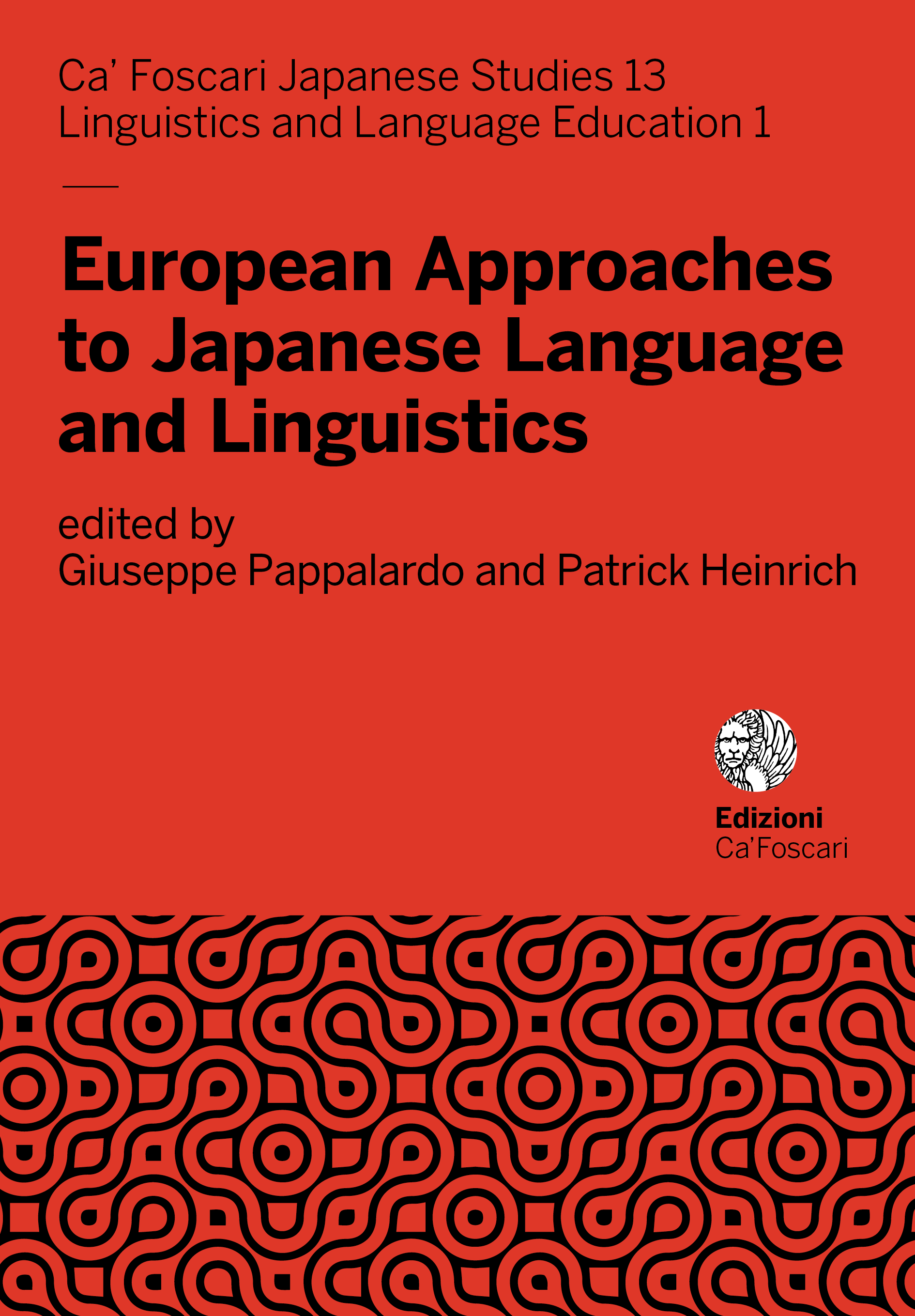Series |
Ca’ Foscari Japanese Studies
Edited book | European Approaches to Japanese Language and Linguistics
Chapter | Syllable Weakening in Kagoshima Japanese
Syllable Weakening in Kagoshima Japanese
An Element-Based Analysis
Abstract
This paper examines syllable weakening or nisshōka (入声化) in Kagoshima Japanese (KJ), where high vowel apocope feeds lenition, leading to correspondences such as Tōkyō Japanese (TJ) [kaki] ‘persimmon’ and Kagoshima [kaʔ]. The traditional pattern noted in the literature is quite clear. Apocope elides stem-final /u/ or /i/. The preceding onset is lenited in one of four ways: 1) stops and affricates are debuccalised (/kaki/ > [kaʔ] ‘persimmon’); 2) fricatives undergo voicing neutralisation (TJ [kazu] > KJ [kas] ‘number’); 3) nasals undergo place loss (TJ [kami] > KJ [kaɴ] ‘paper’); 4) rhotics undergo gliding (TJ [maru] > [maj] ‘round’). This paper presents an initial analysis of the data within Element Theory representational framework.
Submitted: March 2, 2020 | Accepted: June 8, 2029 | Published July 3, 2020 | Language: en
Keywords Segmental Structure • Theory • Phonology • Japanese dialects • Kagoshima Japanese • Lenition
Copyright © 2020 Connor Younberg. This is an open-access work distributed under the terms of the Creative Commons Attribution License (CC BY). The use, distribution or reproduction is permitted, provided that the original author(s) and the copyright owner(s) are credited and that the original publication is cited, in accordance with accepted academic practice. The license allows for commercial use. No use, distribution or reproduction is permitted which does not comply with these terms.
Permalink http://doi.org/10.30687/978-88-6969-428-8/002





